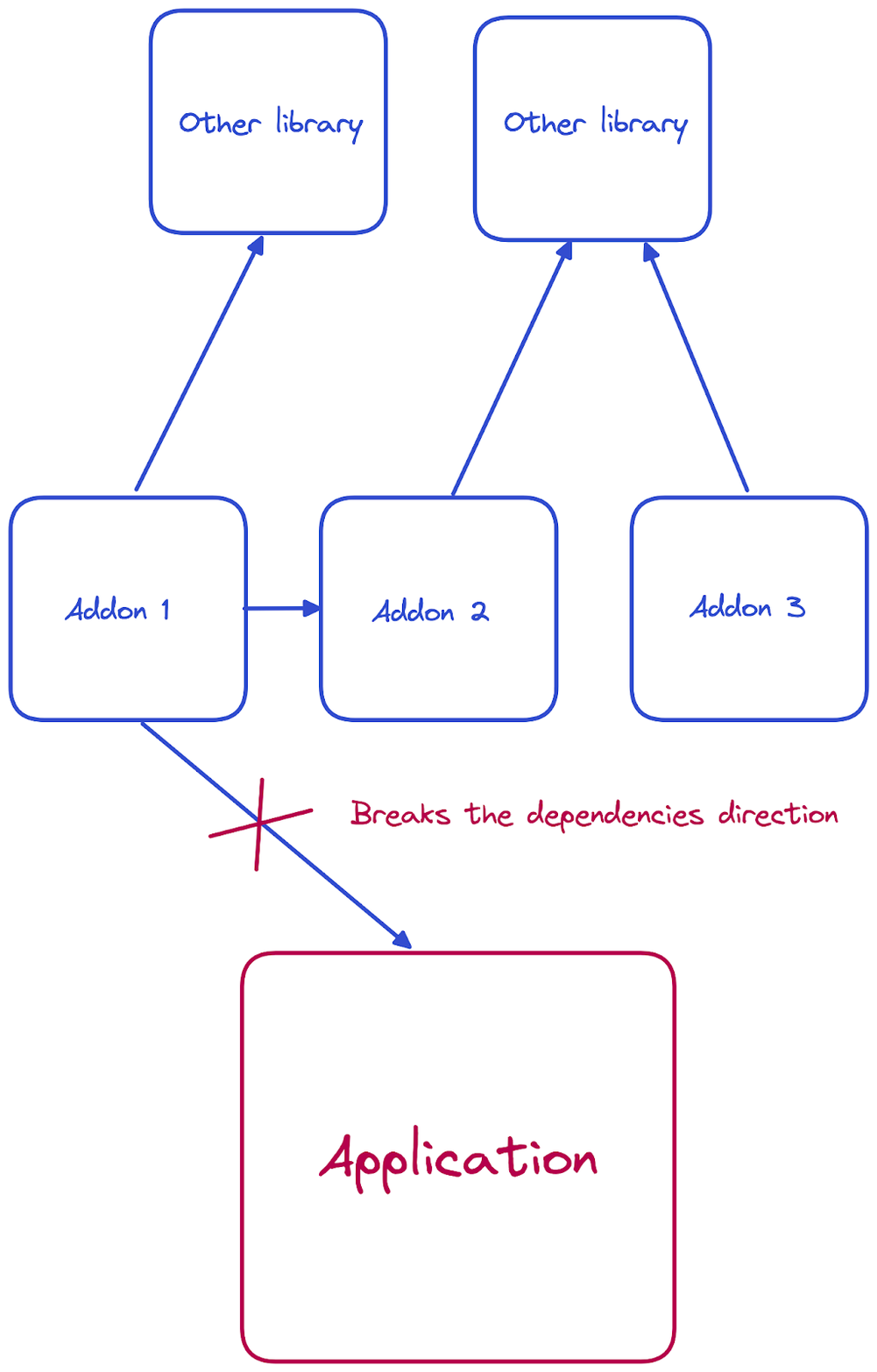Page History
...
This proposal has the goal to try to provide a solution in order to be able to modularize the DSpace Angular architecture. This need was already expressed during one of the last dspace visioning meeting group :
https://wiki.lyrasis.org/display/DSPACE/DSpace+Product + Visioning + Group2021.
The new architcture should allow
This means So the main porpouse is to define and to provide a new architcture allowing, for example, that the dspace’s core functionalities to could be used by an external plugin which is not part of the dspace’s code repository .
How?
Our application has been built using a monolithic architecture, where all the components and functionality are tightly coupled within a single codebase. While this approach has served us well till now, it has also introduced challenges in terms of the ability to introduce new features and updates independently from the codebase.
...
With the current monolithic architecture if any DSpace adopter needs to implement an additional DSpace feature/addon they can’t depends on the application code. Because, if the addon depends on core functionalities, helpers functions, or shared components in the application, it means it depends on application code and this breaks the libraries dependencies direction.
Moving to a library-based architecture allows to break down our Angular application into smaller, self-contained libraries or modules. These libraries can be reused across multiple projects or addons. The application can depend on these libraries just like it did before, but now in a more structured way.
With a library-based architecture, we can separate different concerns and responsibilities into individual libraries. This separation enables better organization and maintainability of our codebase. For example, we can have separate libraries for core functionality, UI components, data services, authentication, and more, making it easier to modify specific parts of the application.
...
- https://nx.dev/more-concepts/library-types
- https://nx.dev/more-concepts/dependency-management
- https://nx.dev/more-concepts/code-sharing
- https://nx.dev/more-concepts/creating-libraries
- https://nx.dev/more-concepts/applications-and-libraries
- https://nx.dev/more-concepts/how-project-graph-is-built
- https://nx.dev/recipes/environment-variables/define-environment-variables
POC Analysis Overview
POC BRANCH IS AVAILABLE HERE
What we've done
migrate to standalone components (Merged as of DSpace 8.0)
- add NX to the project
- create examples of how the library can be created https://github.com/4Science/dspace-angular/tree/f/ej/nx-poc/libs
Standalone migration
| Note |
|---|
As of DSpace 8.0, the user interface now uses Angular standalone components and Angular 17. |
https://github.com/DSpace/dspace-angular/issues/2370
By migrating to standalone using the schematics provided by Angular, we solve the issue of not knowing component dependencies. Because the migration now puts the components deps directly in the imports array of the component, we can easily understand what depends on what and move these components around without breaking anything.
Also, by understanding the components deps, later on we can move these components to libraries in a non-breaking way because everything will be explicit, while doing that while we still use modules will be hard and error-prone, because of implicit dependencies.
Benefits
Easier future refactorings
Moving to other folders
Moving to libraries (nx)
Smoother learning curve for new devs
Junior devs don’t have to understand or see what SharedModule has imported and exported
Easier to reason about what the components depends on
Easier lazy loading
Before standalone we couldn’t safely lazy load a component without also loading it’s module (missing providers), while now we can lazy load them and be sure that it won’t break at runtime
Easier routing lazy loading per component using loadComponent
No need for {FEATURE}RoutingModule to do lazy loading of routes
Better compilation time
Because the angular compilation scope will have to compile everything that’s changed, when using a SharedModule all the components will be affected if we change a component, while when using standalone the compilation is optimized because only that component and its dependants will have to be compiled.
Migrating to NX
Angular CLI is great, until the project becomes too big and compilation time reaches 15 minutes and ng serve takes 4 minutes. That’s not Angular’s fault, but just current tools being used by Angular CLI to compile our apps. The solution to performance for almost all things in programming is caching. Angular CLI does implement caching in cold builds (filesystem caching), but it’s not enough to fix our issue. Here comes NX, NX in the beginning was just Angular CLI on steroids, but it has grown to be much more than that. With NX we can create libraries that have their own compilation scope, and that need to be compiled only when changed, and their compilation result will be re-used until it’s changed again.
Benefits:
If we chunk our app into smaller buildable libraries we can shrink down that compilation time from 15 minutes to 2-3 minute in best case scenarios.
Parallel builds
Build graph tools
Task orchestration
Tooling to manage a big repo of libs and more
Issues with the migration and possible roadmap:
We have a big SharedModule and CoreModule that depend on each other, so migrating these to libraries is not easily doable without the standalone migration.
We have to start with components or util function that don’t depend on anything else except themselves (finding root files) and they are not so easy to find in this big project
We have to define the folder architecture we want to follow based on our needs
It will move a lot of files around in folders, so maybe this is an issue for clients that have extended Dspace in their own branches (syncing repos becomes harder)
It is hard to chunk services as they have a lot of hidden deps because of module providers
We will have to update how some parts of theming feature works because if we move components to libs they cannot depend on application code, so we will have to make the theming configurable from app part.
Things to keep in mind:



